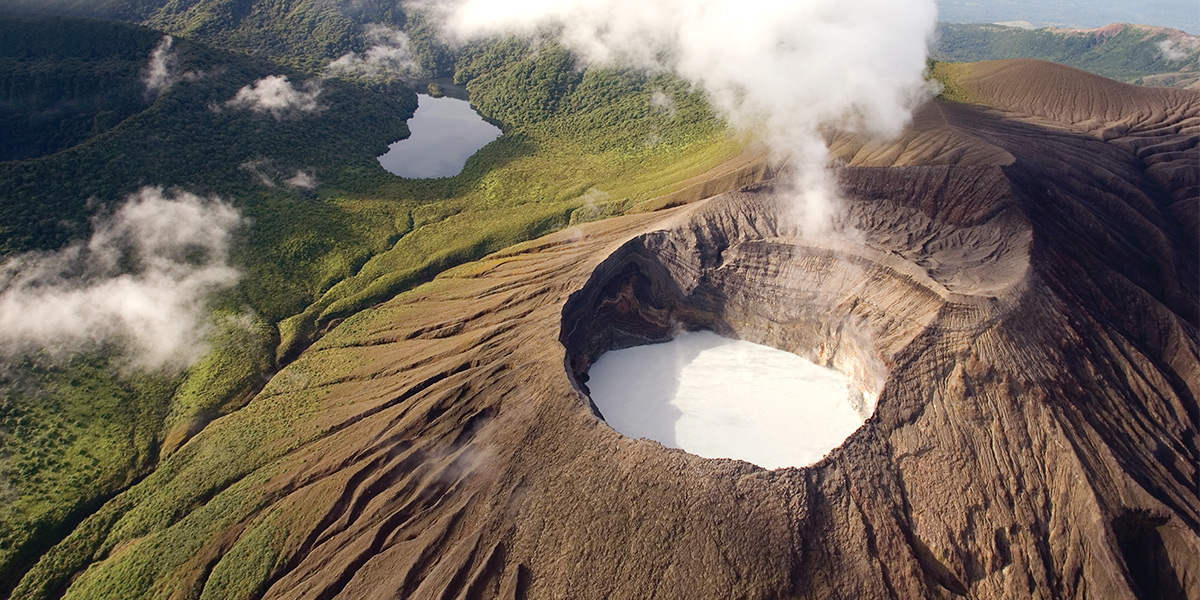Rincón de la Vieja: The Legend Behind the Name
Have you ever wondered about the origin of the name behind the volcano known as Rincon de la Vieja? The Legend of Rincón de la Vieja dates back approximately 600 years, tracing its roots to the pre-Columbian era in Costa Rican culture. Even before the 15th Century, the Curubandé tribe inhabited the Guanacaste area, primarily in the northern region of Costa Rica. This is where the legend begins.

When Romance Leads to Trouble:
In the region, an indigenous community thrived under the leadership of Curubandé, their Chieftain. Among his cherished possessions was his daughter, who possessed exceptional healing skills. She understood the secret benefits of volcanic mud baths, thermal hot springs, and herbal remedies.
Fate had it that she fell in love with Mixcoac, a young man from a rival tribe. This incited anger in her father, Chieftain Curubandé. Consumed by wrath, he plotted to separate them. He deceived Mixcoac into attending a gathering near the volcano’s edge, where he rendered him incapacitated with excessive drink. In a tragic struggle, Chieftain Curubandé killed Mixcoac and cast his body into the volcano.
At that time, Curubandá, his daughter, carried a child born from their love. Overwhelmed by Mixcoac’s death, her profound sorrow drove her to make a desperate decision: she fled and sought refuge at the summit of the volcano.
The Princess’s Sorrow:
Concealed within the mountain’s embrace, Curubandá awaited childbirth. As the legend goes, consumed by sorrow and longing to unite her child with its father, she released the baby into the crater’s depths.
As years passed, Curubandá became a recluse, residing deep within the forest’s heart. Her healing abilities flourished through interactions with those seeking comfort. Whispers of her miracles spread, compelling individuals to journey great distances for her soothing touch.
For decades, Curubandá tirelessly eased the burdens of those seeking aid. Even after her passing, some claimed to hear her sorrowful echoes in the mountain’s caves. Among the devoted, her mournful reverberations persisted—a steadfast connection between her spirit and the mountain’s soul.
The place became known as “Rincón de la Vieja,” translating to “The Old Lady’s Corner.” This is how Rincon de la Vieja earned its name.
The Rincón de la Vieja Volcano National Park stands as a living testament to Princess Curabanda’s legend.
The Name Endures:
When Spanish explorers arrived during the Colonial Era, captivated by the story, they retained the name. On November 26th, 1971, it was designated a district through Executive Decree 2077-G, segregating it from Liberia, Costa Rica.
Healing Discoveries, Still Relevant:
While Curubandá’s history remains shrouded in mystery, her discoveries’ to include healing through thermal hot springs and volcanic mud, persists after centuries.
At Vandará, we firmly believe in the benefits of volcanic mud baths, thermal hot springs, and the healing power of nature.
Volcanic Mud Baths:
Ideal for skin care and rejuvenation, volcanic mud’s mineral richness exfoliates and cleanses, promoting healthier, vibrant skin.
As a detoxification regimen, Volcanic Mud Baths draw out toxins through the skin. Warmth and minerals aid blood circulation and oxygen delivery to cells.
Claimed to alleviate pain, volcanic mud baths can ease muscle aches, joint pain, and skin conditions like eczema and psoriasis, acting as an anti-inflammatory agent.
Thermal Hot Springs:
Soaking in natural hot springs also offers many benefits. Warm water and natural surroundings reduce stress and anxiety, enhancing sleep quality and a state of relaxation.
Inhaling steam benefits respiratory conditions like sinus congestion and allergies.
Skin health, blood circulation, pain relief, and detoxification can also result from Thermal Hot Springs. The minerals and heat open pores.
Volcanic mud baths and Thermal Hot Springs are often found in scenic or geologically intriguing areas, providing cultural, recreational, and educational experiences.
Come enjoy them all at Vandara! Book your Nature Pass here: www.vandaracostarica.com/nature-pass/
